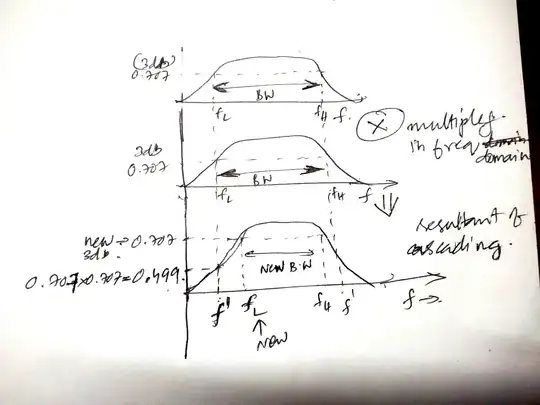When you have a single op amp, you'll have a single pole at the break frequency and the output voltage will roll off at 6dB/octave, but when you have two op amps, you have two poles at the break frequency (break frequency of a single op amp, which we assumed is the same for both op amps) and the output voltage will thus roll of at 12dB/octave (since the transfer functions are multiplied), meaning that the system will reach its overall break frequency sooner (as seen from the point at which it starts to roll off) than wit a single op amp.
More precisely at f3dB_overall = f3db*sqrt(2^(1/2) - 1) ~= 0.64fd3B, where f3dB is the common break frequency for each individual op amp.
More generally, for n cascaded op amps, f3dB_overall = f3db*sqrt(2^(1/n) - 1).
Also, as markrages points out, to get around this problem you can use uncompensated op amps and add the compensation capacitor over the whole cascade by yourself.
